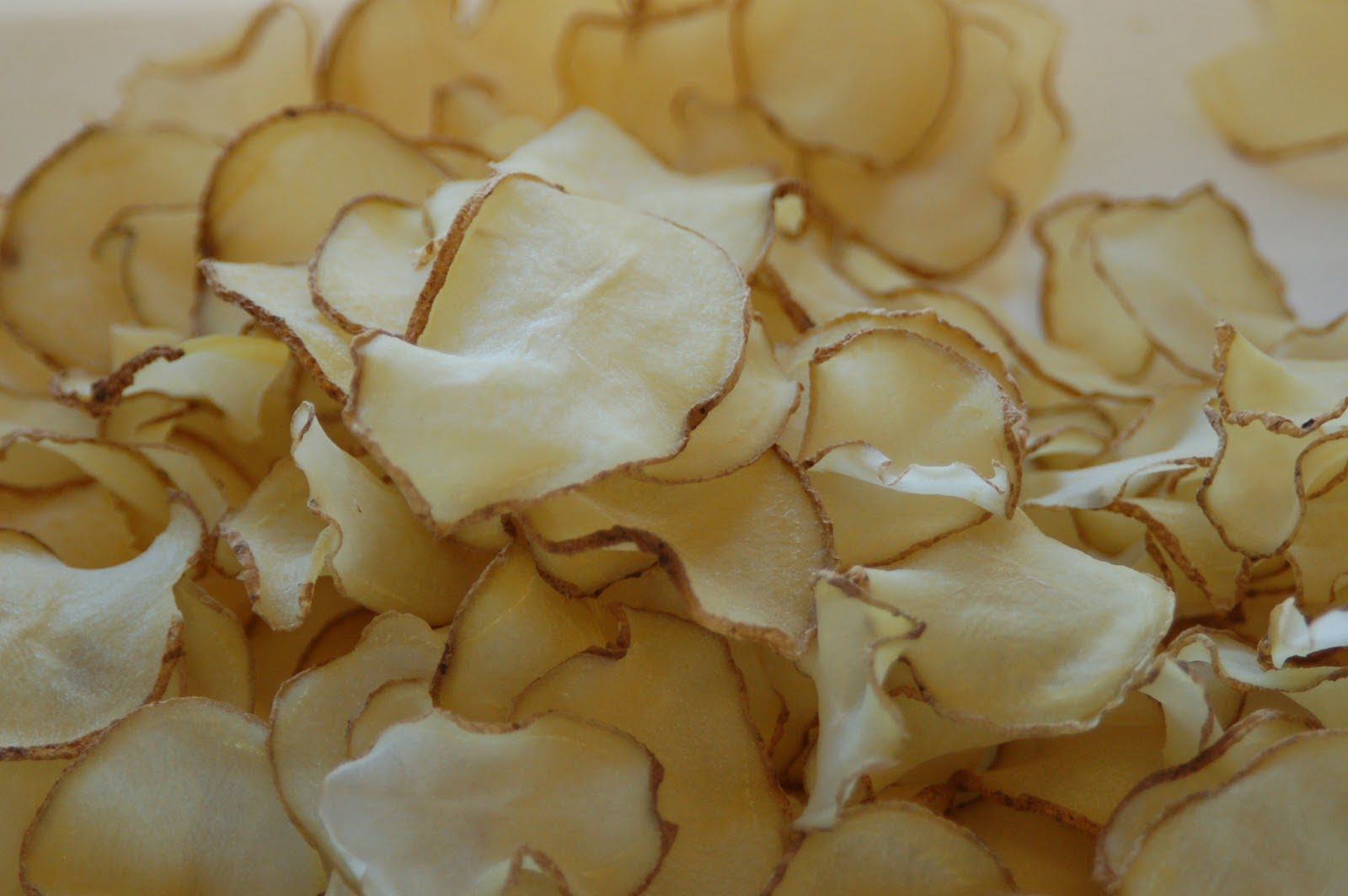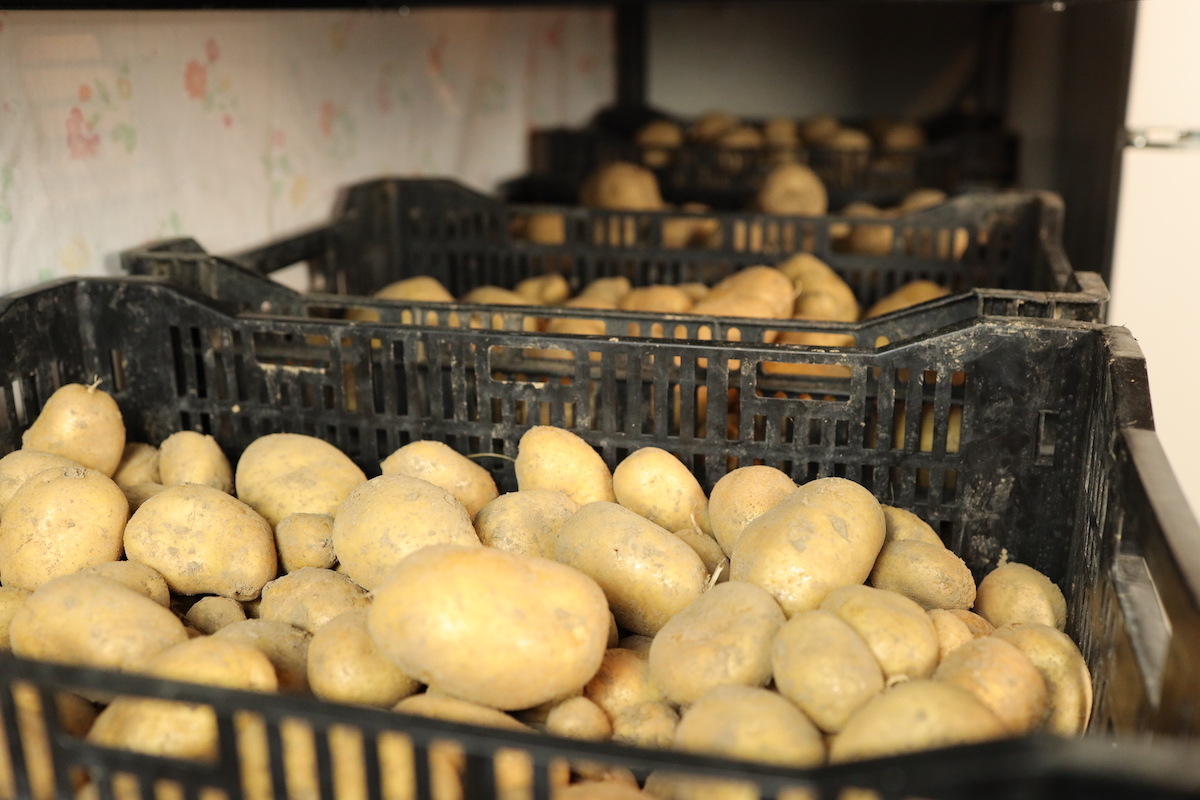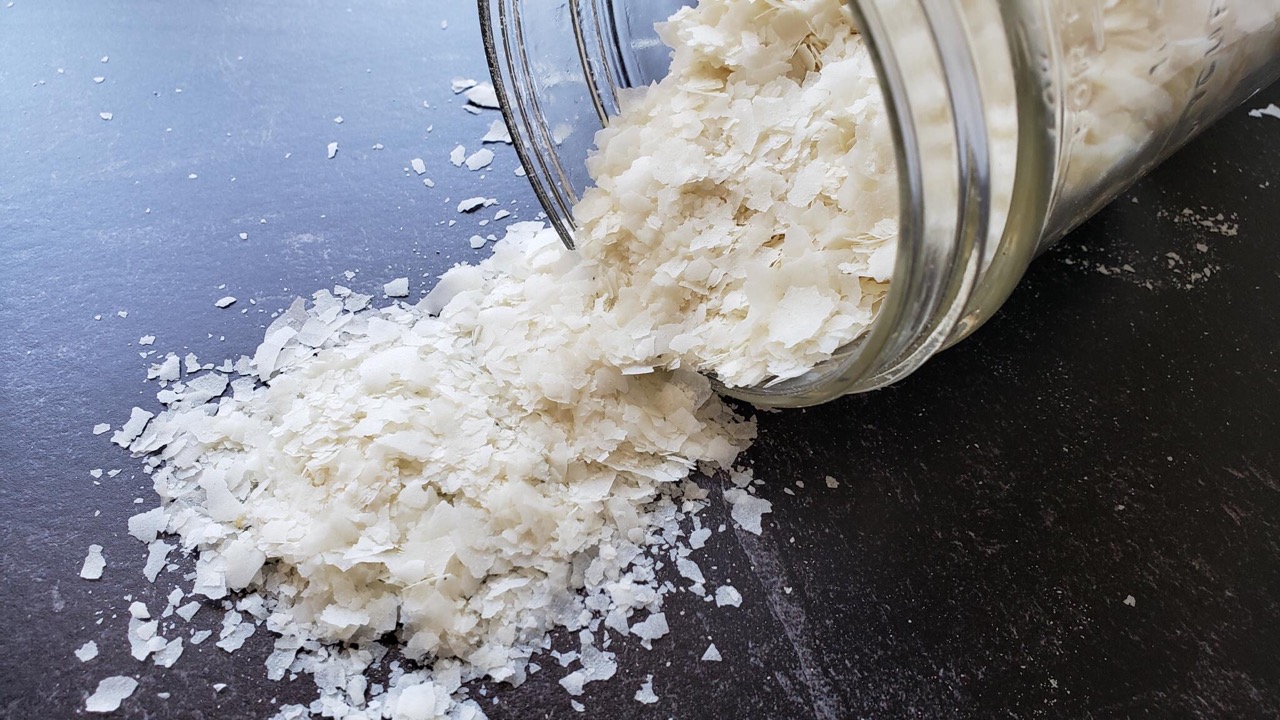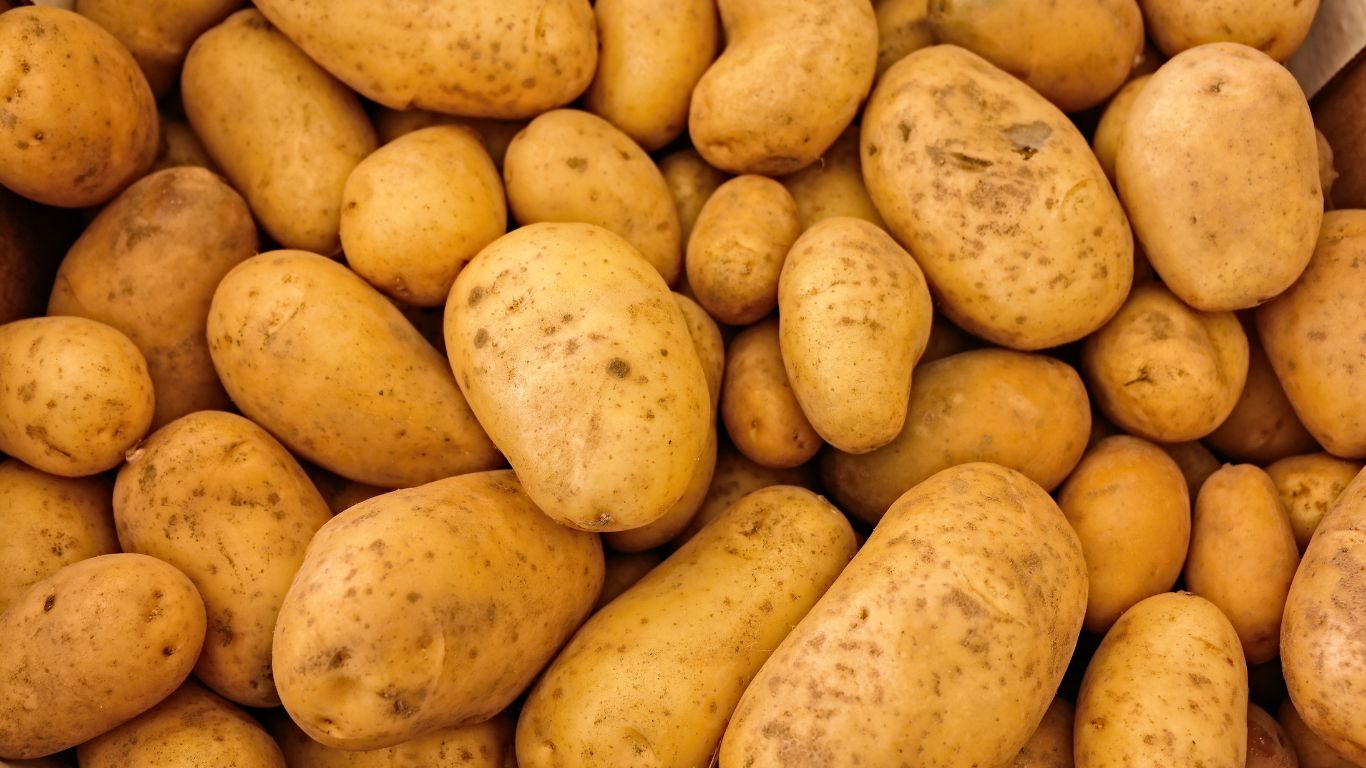

Articles
How To Store Dehydrated Potatoes Long Term
Modified: January 6, 2024
Learn how to store dehydrated potatoes for long-term use with these informative articles. Discover tips and techniques to preserve your potatoes and enjoy their flavor for years to come.
(Many of the links in this article redirect to a specific reviewed product. Your purchase of these products through affiliate links helps to generate commission for Storables.com, at no extra cost. Learn more)
Introduction
When it comes to food storage, having a reliable and long-lasting supply of essential ingredients is crucial. One such versatile ingredient that many people rely on is dehydrated potatoes. Whether you’re a seasoned prepper, an outdoor enthusiast, or simply someone who wants to be prepared for unexpected events, learning how to store dehydrated potatoes long term is a valuable skill.
Dehydrated potatoes are a popular option for food storage because they have a long shelf life and retain most of their nutritional value. They are lightweight, take up less space, and can be easily rehydrated to use in various dishes. Plus, they are incredibly versatile and can be used in soups, stews, casseroles, and more.
In this article, we will explore the importance of storing dehydrated potatoes long term and provide you with the essential knowledge to ensure their longevity. From proper preparation to the ideal storage environment, we will cover everything you need to know to keep your dehydrated potatoes fresh and ready whenever you need them.
So, let’s dive in and discover the key factors to consider when it comes to storing dehydrated potatoes long term.
Key Takeaways:
- Storing dehydrated potatoes long term ensures food security, cost savings, and convenience. Proper preparation, ideal storage environment, and regular monitoring are key to maintaining their quality and nutritional value.
- Choosing airtight containers, controlling temperature and humidity, and practicing stock rotation are essential for extending the shelf life of dehydrated potatoes. With proper care, they can provide a reliable food supply for years to come.
Read more: How To Store Dehydrated Fruit Long Term
Importance of Storing Dehydrated Potatoes Long Term
Storing dehydrated potatoes long term is not only a practical choice but also an essential step in ensuring food security. Here are some reasons why it is important to store dehydrated potatoes for an extended period:
- Emergency Preparedness: In times of emergencies or natural disasters when access to fresh food may be limited, having a stockpile of dehydrated potatoes can provide a valuable source of nutrition. They are lightweight, easy to store, and can be kept for months or even years.
- Convenience and Versatility: Dehydrated potatoes offer a convenient solution for meal planning and preparation. They can be easily rehydrated by adding water, making them a versatile ingredient that can be used in various recipes. From hearty soups to delectable casseroles, dehydrated potatoes can be a valuable addition to any meal.
- Cost Savings: Buying dehydrated potatoes in bulk and storing them long term can save you money in the long run. Rather than purchasing fresh potatoes that may spoil before you can use them, having dehydrated potatoes on hand eliminates waste and allows you to stretch your food budget.
- Extended Shelf Life: Dehydrated potatoes have an exceptionally long shelf life when stored properly. The dehydration process removes moisture from the potatoes, preventing bacterial growth and enzymatic reactions that can cause spoilage. With the right storage conditions, dehydrated potatoes can last for several years without losing their quality.
- Nutritional Value: Dehydrated potatoes retain most of their nutrients, making them a valuable source of essential vitamins and minerals. They are rich in carbohydrates, providing a great energy source, and also contain dietary fiber for digestive health.
By storing dehydrated potatoes long term, you can ensure a stable food supply, save money, and have peace of mind knowing that you are prepared for any situation that may arise.
Factors to Consider for Long-Term Storage
When it comes to storing dehydrated potatoes long term, there are several factors to consider to ensure their freshness and quality. Here are the key factors you should take into account:
- Moisture Content: Moisture is the biggest enemy when it comes to storing dehydrated potatoes. Even a small amount of moisture can lead to spoilage and the growth of mold or bacteria. Make sure that your dehydrated potatoes are completely dry before storing them to prevent any moisture-related issues.
- Airtight Packaging: To maintain the shelf life of dehydrated potatoes, it is essential to store them in airtight packaging. This will help prevent exposure to oxygen and moisture, both of which can degrade the quality of the potatoes over time. Consider using vacuum-sealed bags or containers with airtight lids for optimal storage.
- Temperature: Temperature plays a crucial role in the long-term storage of dehydrated potatoes. It is recommended to store them in a cool, dark location with a consistent temperature between 50 to 70 degrees Fahrenheit (10 to 21 degrees Celsius). Avoid areas that are prone to temperature fluctuations or exposure to direct sunlight.
- Humidity: Humidity can lead to the reabsorption of moisture by the dehydrated potatoes, causing them to spoil. It is important to store them in an environment with low humidity. Consider using desiccant packs or silica gel packets in the storage containers to absorb any excess moisture.
- Pest Control: To prevent pests such as rodents or insects from infesting your stored dehydrated potatoes, take appropriate measures. Keep the storage area clean and free from any potential food sources for pests. Use tightly sealed containers to discourage pests from accessing the food.
- Rotation and Monitoring: Regularly check your stored dehydrated potatoes for any signs of spoilage or degradation. It is important to rotate your stockpile, using the oldest potatoes first and replenishing with fresh ones. This ensures that you always have a fresh and reliable supply of dehydrated potatoes.
By considering these factors, you can create an optimal storage environment for your dehydrated potatoes, extending their shelf life and preserving their quality for years to come.
Proper Preparation of Dehydrated Potatoes for Storage
Before you store your dehydrated potatoes for the long term, it is crucial to properly prepare them to ensure their quality and longevity. Here are the steps to follow:
- Quality Check: Start by inspecting your dehydrated potatoes for any signs of spoilage or contamination. Discard any potatoes that show signs of mold, discoloration, or off-putting odors.
- Rehydration Test: If you have not used your dehydrated potatoes before, it is a good idea to perform a rehydration test. Take a small sample of the potatoes and rehydrate them according to the instructions on the package. This will allow you to assess their texture and determine the amount of water and time required for optimal rehydration.
- Vacuum Sealing: Using a vacuum sealer is an excellent way to ensure airtight packaging for your dehydrated potatoes. Place the potatoes in vacuum-seal bags or use a vacuum sealer to remove excess air from the bags. This method helps to prevent oxidation and maintain the quality of the potatoes during long-term storage.
- Labeling and Date: It is important to label your storage bags or containers with the contents and the date of packaging. This will help you keep track of when the potatoes were stored and ensure proper rotation of your food supply.
- Cool and Dry Storage: Store your properly prepared dehydrated potatoes in a cool, dry place away from direct sunlight, moisture, and extreme temperatures. Consider using a pantry, basement, or a dedicated food storage area that meets the recommended temperature and humidity criteria.
By following these steps, you can ensure that your dehydrated potatoes are well-prepared for storage and will remain in good condition until you’re ready to use them.
Choosing the Right Storage Containers
When it comes to storing dehydrated potatoes long term, choosing the right storage containers is essential for maintaining their quality and freshness. Here are some factors to consider when selecting storage containers:
- Airtightness: Opt for containers that provide airtight seals to prevent the entry of oxygen and moisture. This will help to preserve the flavor, texture, and nutritional value of the dehydrated potatoes.
- Material: Choose containers made of food-grade materials such as BPA-free plastic, glass, or metal. These materials are durable, safe for food storage, and do not transfer any unwanted flavors or chemicals to the potatoes.
- Size: Consider the quantity of dehydrated potatoes you plan to store and choose containers that can comfortably accommodate that amount. It is advisable to use smaller containers rather than larger ones to minimize air exposure when opening the storage containers.
- Transparency: Opt for transparent or translucent containers that allow you to see the contents without opening them. This way, you can easily identify the potatoes and monitor their condition without the need to open multiple containers unnecessarily.
- Stackability: If you have limited storage space, choose containers that are stackable. This will help maximize the use of vertical space and keep your pantry or storage area organized.
- Additional Protection: Consider using additional protective measures such as oxygen absorbers or silica gel packets inside the containers. These help to absorb any residual oxygen or moisture and further extend the shelf life of the dehydrated potatoes.
Remember to clean and sanitize the storage containers before filling them with dehydrated potatoes. This will ensure that there are no contaminants or odors that can compromise the quality of the food.
Overall, selecting the right storage containers is vital for preserving the quality and shelf life of your dehydrated potatoes, ensuring that they remain fresh and ready for future use.
Store dehydrated potatoes long term in airtight containers, such as mason jars or Mylar bags, in a cool, dark place. Adding oxygen absorbers can help extend their shelf life.
Read more: How To Store Dehydrated Food For Long Term
Creating an Ideal Storage Environment
Creating an ideal storage environment is crucial for maintaining the freshness and quality of your dehydrated potatoes over the long term. Here are some key factors to consider when setting up the storage environment:
- Temperature: Maintain a consistent temperature between 50 to 70 degrees Fahrenheit (10 to 21 degrees Celsius) in the storage area. Avoid extreme temperature fluctuations, as they can affect the texture, flavor, and nutritional content of the dehydrated potatoes.
- Humidity: Keep the humidity level low in the storage area to prevent moisture absorption by the dehydrated potatoes. Aim for a humidity level below 15 percent if possible. You can use a dehumidifier or moisture-absorbing products like desiccant packs or silica gel packets to control humidity.
- Light Exposure: Protect the dehydrated potatoes from direct sunlight or artificial light sources as they can degrade the nutritional content and cause discoloration. Store them in a dark area, preferably in opaque containers or in a pantry with minimal exposure to light.
- Air Circulation: Ensure proper air circulation in the storage area to prevent the buildup of stagnant air. This can be achieved by keeping some space between storage containers and avoiding overcrowding. Good airflow helps to maintain a consistent environment and reduces the risk of moisture condensation.
- Cleanliness: Keep the storage area clean, free from pests, and well-maintained. Regularly inspect and clean the storage containers to remove any dirt, debris, or potential sources of contamination. This ensures that your dehydrated potatoes remain safe and hygienic for long-term storage.
Additionally, it is important to regularly monitor the storage environment to ensure that it remains optimal. Check for any signs of moisture, pest infestation, or other issues that may compromise the quality of the dehydrated potatoes.
By creating an ideal storage environment, you can extend the shelf life of your dehydrated potatoes and ensure that they retain their flavor, nutritional value, and quality for an extended period.
Tips for Extending Shelf Life
To maximize the shelf life of your dehydrated potatoes, there are several tips and techniques you can follow. These tips will help maintain their quality and ensure that they remain edible for an extended period. Here are some effective strategies for extending the shelf life of your dehydrated potatoes:
- Proper Packaging: Ensure that your dehydrated potatoes are stored in airtight containers or vacuum-sealed bags to prevent the entry of moisture, oxygen, and pests.
- Temperature Control: Keep the storage area cool and avoid exposing the potatoes to excessive heat. Aim for a consistent temperature between 50 to 70 degrees Fahrenheit (10 to 21 degrees Celsius).
- Low Humidity: Maintain a low humidity environment by using moisture-absorbing products such as desiccant packs or silica gel packets inside the storage containers.
- Darkness: Protect the dehydrated potatoes from exposure to light, as it can cause nutrient degradation and discoloration. Store them in a dark area, preferably in opaque containers or in a pantry with minimal light exposure.
- Rotation: Practice proper stock rotation by using the oldest dehydrated potatoes first. This ensures that you consume them before they reach their expiration date and helps distribute usage evenly.
- Minimal Handling: Handle the dehydrated potatoes with clean, dry hands or utensils to minimize the introduction of moisture, oils, or contaminants that could compromise their shelf life.
- Regular Inspection: Periodically inspect your stored dehydrated potatoes for any signs of spoilage, including mold, unusual odors, or discoloration. Discard any potatoes that show these signs.
- Storage Location: Choose a suitable storage location away from direct sunlight, heat sources, and areas prone to temperature fluctuations. A cool, dry, and well-ventilated space is ideal.
- Proper Rehydration: Follow the instructions for rehydration carefully to ensure optimal texture and taste. Avoid over-soaking the potatoes, as it can affect their quality and lead to a mushy consistency.
By implementing these tips, you can significantly extend the shelf life of your dehydrated potatoes and ensure that you have a reliable food supply for future use.
Monitoring and Rotating Your Potato Stockpile
When it comes to storing dehydrated potatoes long term, it is essential to regularly monitor your stockpile and practice proper rotation to maintain the quality and freshness of the potatoes. Here are some key steps to follow:
- Inspection: Regularly inspect your storage containers or bags of dehydrated potatoes for any signs of spoilage, such as mold, unusual odors, or discoloration. Discard any potatoes that show these signs to prevent contamination of the rest of your stockpile.
- Labeling and Date: Clearly label each storage container or bag with the contents and the date of packaging. This will help you keep track of when the potatoes were stored and facilitate proper rotation.
- First In, First Out (FIFO) Method: Practice the FIFO method, which means using the oldest potatoes first. When you need to use dehydrated potatoes, select them from the stockpile that were stored earliest, ensuring that none of your supplies go to waste.
- Regular Usage: Incorporate dehydrated potatoes into your meal planning and regular cooking routine to ensure that you rotate through your stockpile. This helps to prevent the potatoes from sitting unused for an extended period.
- Replenishment: As you use your stored dehydrated potatoes, make sure to replenish your stockpile with fresh supplies. This will ensure that you always have a reliable food supply and maintain a consistent rotation cycle.
- Monitoring Shelf Life: Keep track of the expiration dates or recommended shelf life of your dehydrated potatoes. Regularly check the packaging or consult the manufacturer’s guidelines to ensure that you consume the potatoes within the recommended timeframe.
- Quality Control: Pay attention to the texture, flavor, and aroma of the rehydrated potatoes. If you notice any significant changes or if they don’t meet your expectations, it may be a sign that the potatoes have degraded in quality and should be replaced.
By monitoring your potato stockpile and practicing proper rotation, you can ensure that the dehydrated potatoes remain fresh, delicious, and ready for use whenever you need them. Regular monitoring and replenishment will help you maintain a well-managed and efficient food storage system.
Conclusion
Storing dehydrated potatoes long term is a wise choice for anyone looking to enhance their food security and preparedness. With their extended shelf life, nutritional value, and versatility, dehydrated potatoes are a valuable addition to any food storage plan.
By considering factors such as moisture content, airtight packaging, temperature control, and proper storage containers, you can ensure the longevity and quality of your dehydrated potatoes. Creating an ideal storage environment with low humidity, minimal light exposure, and regular monitoring will further extend their shelf life and maintain their nutritional integrity.
Remember to practice proper preparation techniques, such as quality checks, rehydration tests, and vacuum sealing, to ensure that your dehydrated potatoes are ready for long-term storage. Additionally, implementing strategies like stock rotation and regular usage will help you maintain a fresh, reliable supply.
Whether you’re preparing for emergencies, looking to save money, or simply want to have versatile ingredients on hand, storing dehydrated potatoes long term is a practical and beneficial choice. With proper storage and care, your stockpile of dehydrated potatoes will be ready to provide delicious meals and peace of mind for years to come.
So, start building your dehydrated potato stockpile today and rest assured that you’re well-prepared for any situation that may arise.
Frequently Asked Questions about How To Store Dehydrated Potatoes Long Term
Was this page helpful?
At Storables.com, we guarantee accurate and reliable information. Our content, validated by Expert Board Contributors, is crafted following stringent Editorial Policies. We're committed to providing you with well-researched, expert-backed insights for all your informational needs.















0 thoughts on “How To Store Dehydrated Potatoes Long Term”